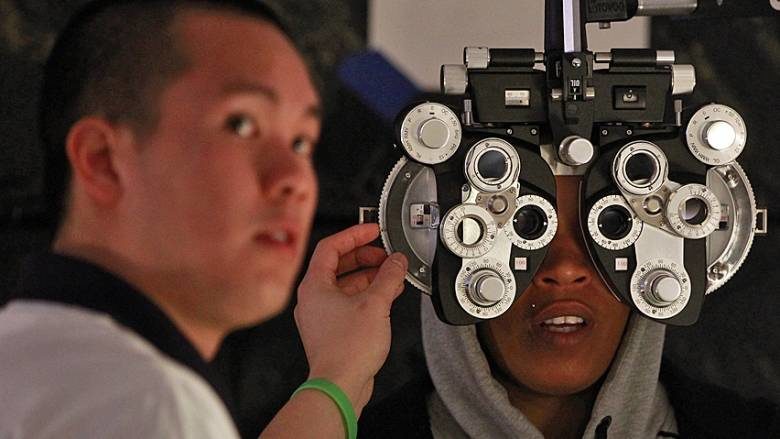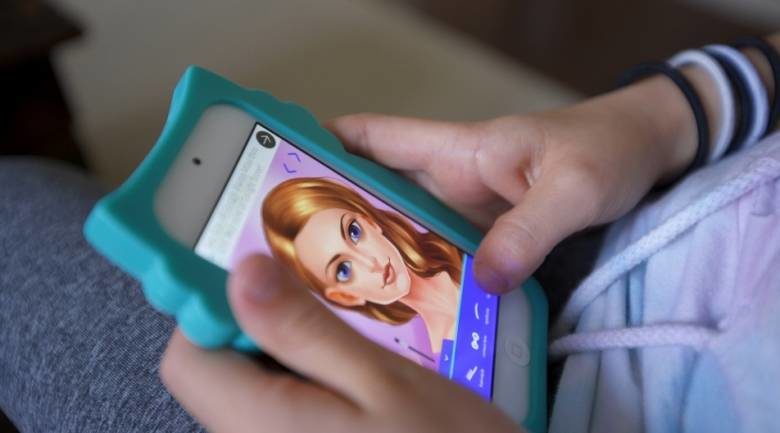
Jaclyn was diagnosed with myopia, or nearsightedness, at the age of four. "I was surprised to learn that she needed glasses," recalled her mother, Ellen Rosenberg, in Toronto.
Jaclyn wears glasses all the time at school, where they help her to read and write, such as from the blackboard, she said. Her vision isn't so poor that she trips on things when she takes them off to play sports, Rosenberg said.
But in a recent study, more than 30 per cent of young Canadian children walked around with fuzzy vision because of myopia that, unlike Jaclyn's, went undiagnosed. Now experts are exploring a simple way to turn the tide on the worsening problem.
Myopia is "increasing globally at an alarming rate," according to the World Health Organization. It affects an estimated 1.89 billion people worldwide, and if rates don't change, that could rise to 2.56 billion by 2020 - a third of the population.
In what they call the first study of its kind in Canada, optometrists in Waterloo, Ont., found the rate of myopia was six per cent in children aged six to eight in the Waterloo region. That soared to 28.9 per cent in children aged 11 to 13. In myopia or nearsightedness, the eyeball doesn't get enough light and elongates.
The condition isn't innocuous, said study author Debbie Jones, a clinical professor of optometry at the University of Waterloo and a scientist at the Centre for Ocular Research & Education.
Uncorrected myopia can affect a child's schooling and lifestyle. For those with powerful prescriptions, the list of risks grows.
"One of the big problems of being myopic is the higher your prescription, the more at risk you are for complications that can lead to vision loss later in life," such as retinal detachment or degeneration that affects central vision, Jones said.
The retina is like wallpaper that covers the back of the eye, sensing light and sending images to the brain. Stretched too far, the retina may tear.

While genetics play a role, the study's authors have two pieces of advice for what families could do:
- Reduce screen time.
- Spend more time outdoors.
"It's so commonplace to see children glued to tablets, because it's easier to occupy them," Muladzanov said.
"What we tell them is to limit it to less than an hour a day and really encourage outdoor activities, weather permitting. Spend more time socializing with friends, playing sports outside, having an active lifestyle, because apart from the benefits for myopia, there are so many added benefits in terms of health."
Cutting the odds of myopia
Research suggests that spending time outdoors protects against myopia. In the Waterloo study, each additional hour of outdoor time per week lowered the odds of a child having myopia by 14 per cent.
Regardless of where a child is on the myopic spectrum, he or she will benefit from doing more outdoor activities to slow its progression, Muladzanov said.
Why could outdoor time help? It could be exposure to bright light, vitamin D or even the effects of sunlight on neurotransmitters, Muladzanov said. Researchers haven't yet nailed down the association.
Rosenberg sets a screen time limit of 30 minutes for Jaclyn on weekdays, which relaxes on weekends.
Yet during the week, her daughter is drawn to the smartphone. As the image she's viewing on her iPhone reflects in the spectacles, she knows she should put the screen down. "I usually just message and email," Jaclyn says. But she says she shouldn't do it so much.





Comment:
- Kids Who Spend More Time Outdoors Have Better Vision
- Time spent outdoors reduces risk of childhood myopia
- The Modern Assault on Eyesight
- Look at Medicine and its Cross-Eyed View of Nearsightedness
- Is nearsightedness an epidemic?
- Half the world to be short-sighted by 2050
Information on screen time: